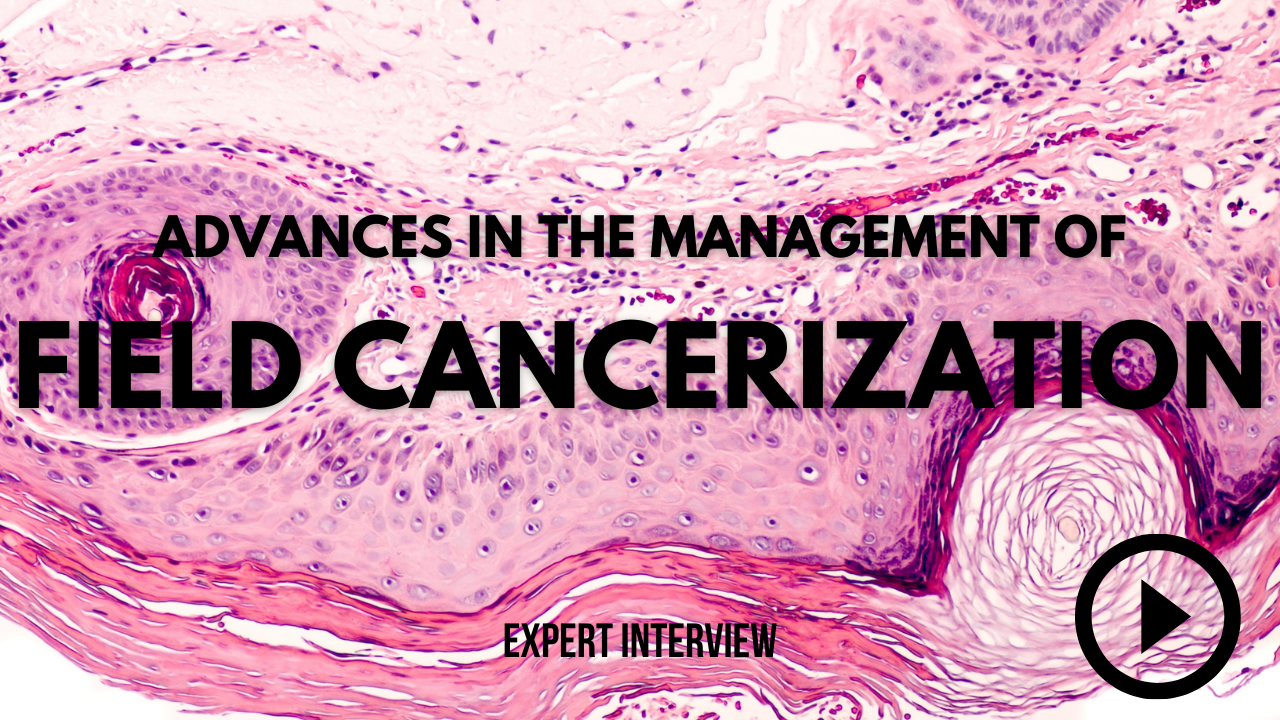- Acne
- Actinic Keratosis
- Aesthetics
- Alopecia
- Atopic Dermatitis
- Buy-and-Bill
- COVID-19
- Case-Based Roundtable
- Chronic Hand Eczema
- Chronic Spontaneous Urticaria
- Drug Watch
- Eczema
- General Dermatology
- Hidradenitis Suppurativa
- Melasma
- NP and PA
- Pediatric Dermatology
- Pigmentary Disorders
- Practice Management
- Precision Medicine and Biologics
- Prurigo Nodularis
- Psoriasis
- Psoriatic Arthritis
- Rare Disease
- Rosacea
- Skin Cancer
- Vitiligo
- Wound Care
News
Article
Tirbanibulin Demonstrates Efficacy for Actinic Keratosis in Larger Field Treatment
Author(s):
Key Takeaways
- Tirbanibulin ointment 1% effectively treats actinic keratosis over 100 cm², with FDA approval for expanded use.
- The phase 3 study showed significant AK lesion reduction and minimal adverse effects, primarily mild erythema and flaking.
The novel drug demonstrated tolerability for AK treatment when applied to a field of 100 cm2 of the face or scalp.
Image Credit: © jaojormami - stock.adobe.com

In a recent clinical trial, tirbanibulin ointment 1% showed promising results for treating actinic keratosis in larger fields of approximately 100 cm2, with good tolerability and efficacy.1 The drug was initially approved for topical treatment over a field up to 25 cm2, specifically on the face and scalp.2 In June 2024, the US Food and Drug Administration (FDA) approved a supplemental New Drug Application (sNDA) for tirbanibulin, quadrupling the size of the approved treatment area to 100 cm2.3
The phase 3 multicenter, open-label study (NCT05279131) was conducted in the United States from June to December 2022. A total of 105 patients were included in the study with 72 male (68.6%) and 33 female (31.4%). Additionally, 37 (35.2%) were <65 years and 68 (64.8%) were ≥65 years, with a median age of 69.1. Approximately two-thirds of the patients were treated for clinically typical AKs on the face (67.6%) and one-third on the scalp (32.4%). The study did not include the lips, eyelids, as well as inside the nostrils and ears.
The single-arm trial consisted of a 4-week screening period, a 5-day treatment period, and an evaluation period of about 7 weeks. During the treatment period, tirbanibulin was applied topically to the affected areas once daily for 5 consecutive days.
The most common local tolerability signs (LTS) were mild to moderate erythema, which occurred in 96.1% of patients, and flaking/scaling, which occurred in 84.4% of patients. Baseline symptoms included erythema (22.9%), flaking or scaling (20.0%), and crusting (1.9%). LTS peaked around days 5 to 8 but was resolved by day 29 of the trial. At day 57, the percentage of patients with erythema, flaking/scaling, or crusting was lower than what was recorded at baseline.
The total number of AKs in the treatment field progressively decreased during the study, with a mean total number of 7.7 AKs at baseline and a mean number of 1.8 at the end of the study at day 57. Overall, the mean number of new AKs that appeared in the treatment field remained relatively low from day 5 to day 57, with a mean ranging between 0.2 and 0.6 new AKs. At least 75% of patients did not have any new lesions at each visit.
Overall, the study indicated the treatment was relatively well tolerated. Although 27.6%of patients reported a treatment-emergent adverse event, the investigator determined only 18.1% were actually treatment-related.The most common treatment-emergent adverse events were mild to moderate application site pruritus (10.5% of participants) and pain (8.6%), which were similarly reported in the phase 3 clinical trials of tirbanibulin over a 25cm2 treatment field. No participants discontinued treatment as a result of the reported adverse events.
The researchers acknowledged some limitations in the study, such as the short follow-up period and lack of a placebo group. Despite these limitations, the authors concluded “the results support the safety of tirbanibulin ointment 1% for use in patients with AK of the face or scalp in disease fields up to 100 cm2.”1
Through this analysis, researchers found that tirbanibulin ointment 1% provided sustained improvements of AK in areas of the face and scalp that measured 100 cm2, with no detrimental cosmetic changes to the treated skin and no relevant change in pigmentation or scarring. This is consistent with what has been reported in previous trials with tirbanibulin treating a smaller area of 25 cm2, demonstrating that the drug can safely be used over a larger surface area.
“The number of AK field-directed therapies targeting areas >25 cm2 currently available is limited, and does not address all the patient needs,” the authors wrote. “Therefore, there is a need for AK treatments to encompass fields >25 cm2, with an optimal efficacy-tolerability profile and patient convenience.”
References
1. Bhatia N, Lain E, Jarell A, et al. Safety and tolerability of tirbanibulin ointment 1% treatment on 100 cm2 of the face or scalp in patients with actinic keratosis: A phase 3 study. JAAD Int. 2024;17:6-14. Published 2024 Jul 18. doi:10.1016/j.jdin.2024.07.001
2. Dao DD, Sahni VN, Sahni DR, Balogh EA, Grada A, Feldman SR. 1% Tirbanibulin Ointment for the Treatment of Actinic Keratoses. Ann Pharmacother. 2022;56(4):494-500. doi:10.1177/10600280211031329
3. FDA approves Almirall’s Klisyri® (tirbanibulin) for the treatment of actinic keratosis on expanded area of face or scalp up to 100 cm2. News release. Almirall. June 10, 2024. https://www.almirall.com/newsroom/news/fda-approves-almirall-s-klisyri-tirbanibulin-for-the-treatment-of-actinic-keratosis-on-expanded-area-of-face-or-scalp-up-to-100-cm2
Newsletter
Like what you’re reading? Subscribe to Dermatology Times for weekly updates on therapies, innovations, and real-world practice tips.







